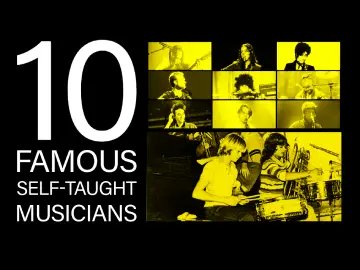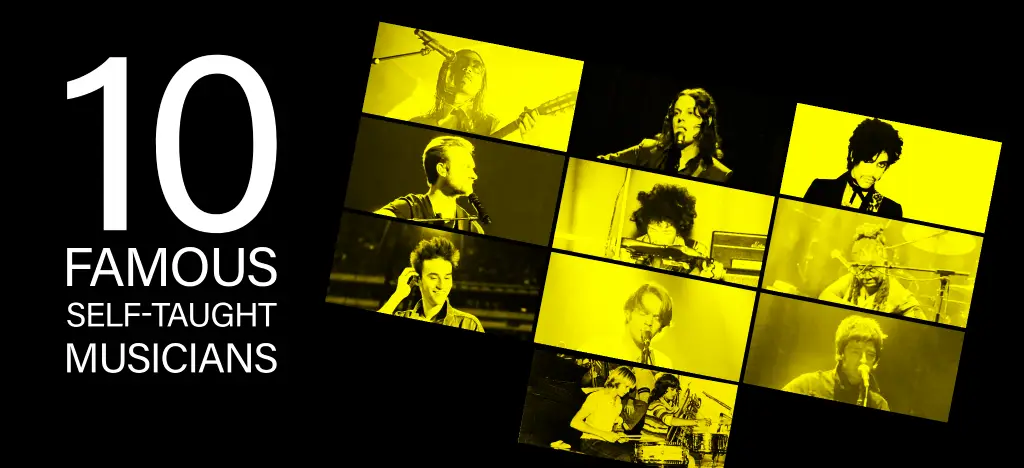When I was a kid, I thought you had to take formal lessons to learn music. Piano lessons, reading music, proper guitar technique — all that stuff. But the more musicians I listened to, the more I realised that so many of them didn’t do any of that. They just picked up an instrument and got on with it.
Some didn’t even have a full set of strings. Others have made entire albums using just a phone. And somehow, those raw, untrained instincts shaped some of the most influential music ever recorded.
This isn’t about being anti-education. It’s about showing how creativity often thrives outside the rules, and what we can learn from the people who proved that.
- 1. Jimi Hendrix — Learned by ear
- 2. Prince — Self-taught genius
- 3. Jack White — DIY rocker
- 4. Kurt Cobain — Raw and simple
- 5. Noel Gallagher — Ear over theory
- 6. Yasmin Williams — Fingerstyle innovator
- 7. Steve Lacy — iPhone producer
- 8. Billy Strings — Bluegrass by ear
- 9. Jacob Collier — Harmony master
- 10. Finneas — Bedroom producer
- Why going your own way might be the best way
- FAQs: Self-learning music
Can you really become a great musician without formal lessons? From Jimi Hendrix to Jacob Collier, these artists show that the answer is yes — and what you can learn from them might just change how you think about music.
1. Jimi Hendrix — Learned by ear
The self‑taught guitarist who reinvented rock
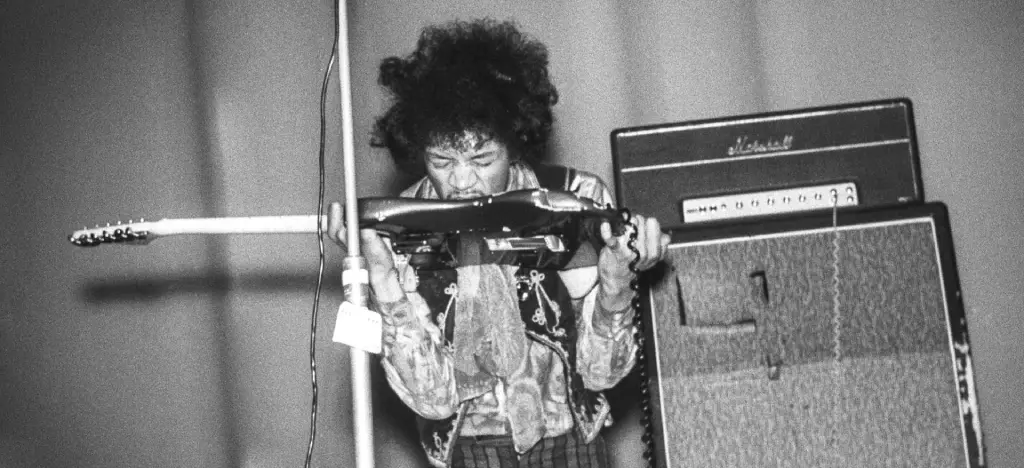 Jimi Hendrix didn’t just teach himself to play guitar; he taught the world to hear it differently.
Jimi Hendrix didn’t just teach himself to play guitar; he taught the world to hear it differently.
Born in Seattle in 1942, Hendrix had no formal music education. He couldn’t read music. What he had instead was a one-string ukulele, a radio, and an obsessive drive to figure things out by ear.
Hendrix’s first instrument wasn’t even a guitar — it was a one-string ukulele he pulled from a pile of rubbish while helping his dad on a side job. The woman who owned it said he could keep it, and he did, using it to pick out melodies by ear, mostly Elvis Presley’s “Hound Dog.” It wasn’t much, but it was enough to get him hooked (source).
A year later, aged 15, he bought a five-dollar acoustic guitar and that was it. He played constantly, learning by watching, copying, jamming, and obsessing over blues records by Muddy Waters, B.B. King, Howlin’ Wolf and Robert Johnson. The first full tune he figured out was the Peter Gunn theme, learned the same way he learned everything else: by listening hard and trusting what felt right.
In a 1968 interview, Hendrix opened up about the frustration of teaching yourself:
“Sometimes you are going to be so frustrated you want to give up the guitar… you’ll hate the guitar. But all of this is just a part of learning, because if you stick with it, you’re going to be rewarded.”
— Guitar Player, Dec. 1968
What you can learn from Jimi Hendrix
👉 You don’t need to wait for the perfect setup or full set of strings — just start. Trust your ears, make mistakes, and figure things out your own way. That’s where originality begins.
💡 ARTMASTER TIP: If Hendrix proved anything, it’s that gear comes second to feel. Check out our guide on how to sound like your guitar heroest— and find out why limitations might be your best asset.
2. Prince — Self-taught genius
The self-taught multi-instrumentalist who didn’t need school to become a genius
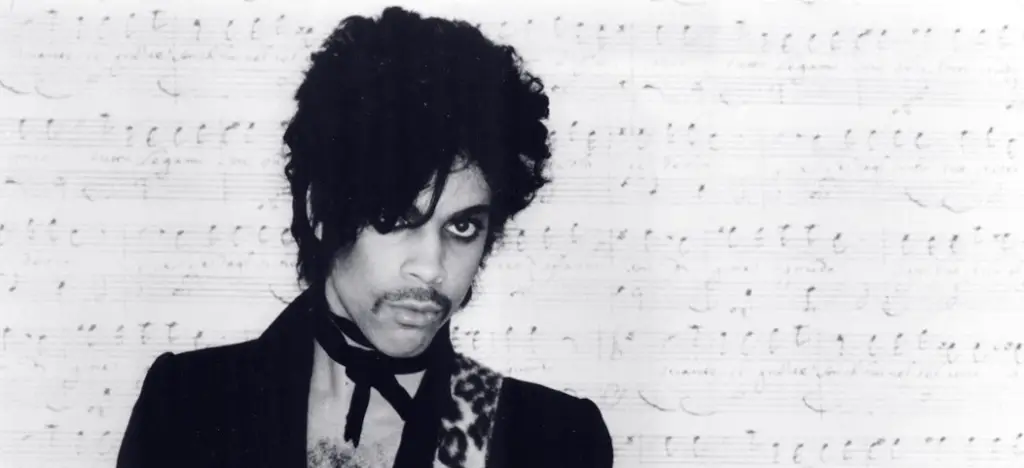 Prince didn’t just learn music. He absorbed it. Played it. Shaped it. And he did it without sticking to anyone else’s rules.
Prince didn’t just learn music. He absorbed it. Played it. Shaped it. And he did it without sticking to anyone else’s rules.
Born in Minneapolis in 1958, Prince Rogers Nelson was surrounded by music from the start. His father was a jazz pianist, and there were early piano lessons, though they didn’t last long. Even as a child, Prince had little time for structured teaching. He preferred to figure things out for himself, trusting his ear and following instinct.
By his teens, he was already teaching himself guitar, bass, drums and keyboards. He wanted control over every sound. At 18, he released his debut album For You, playing all 27 instruments on the record entirely by himself. Not out of necessity, but because that’s how he worked.
“The key to longevity is to learn every aspect of music that you can.”
— Prince, interview from 2010
More than just a performer, Prince taught himself how to produce, arrange and engineer. He would spend long nights in the studio, building tracks from scratch, layering parts one by one, always chasing the sound he heard in his head. For Prince, instinct mattered more than theory. He believed experimentation could take you further than any lesson plan.
What you can learn from Prince
👉 You don’t have to follow anyone else’s method. If traditional lessons don’t suit you, skip them. Dive into what excites you and let your curiosity guide you.
💡 ARTMASTER TIP: Want to understand how Prince crafted so many unforgettable songs? Start by exploring the one concept that ties all music together. It’s not theory or gear — it’s patterns. Once you spot them, you start hearing music differently.
3. Jack White — DIY rocker
Embracing limitations to shape a unique sound
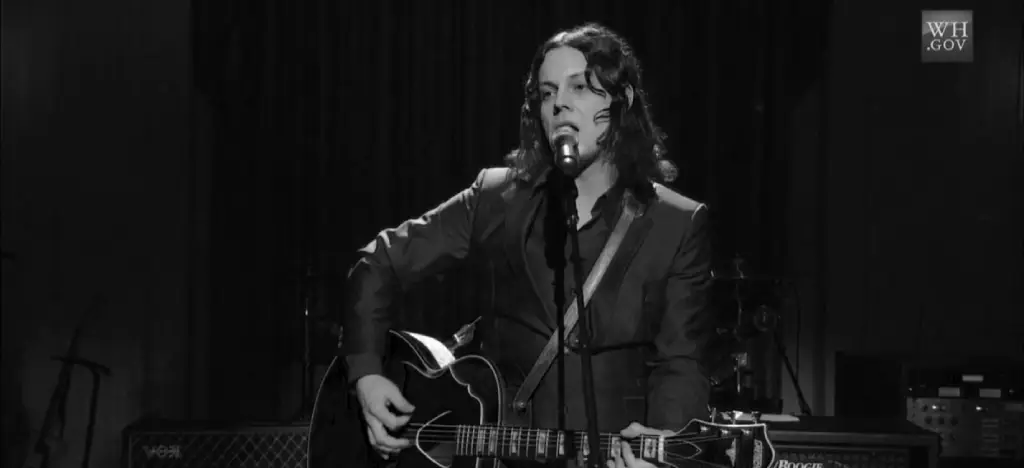 Jack White’s journey began not on a stage, but in his dad’s upholstery shop. Born in Detroit in 1975, he was drawn first to drums. As he told the Oxford Union:
Jack White’s journey began not on a stage, but in his dad’s upholstery shop. Born in Detroit in 1975, he was drawn first to drums. As he told the Oxford Union:
“I didn’t care about the guitar. I wanted to be a drummer my whole life. That was all I cared about.”
— Jack White, Oxford Union interview
That changed when his friend Meg White joined him in forming The White Stripes in 1997. Jack avoided formal training, choosing instead to develop his skills through instinct, trial and error, and hands-on experimentation. He taught himself guitar, bass, piano, drums and recording techniques by diving in and figuring things out as he went.
He was known for deliberately using cheap or broken equipment to limit his options and force creativity. In It Might Get Loud, he even builds a one-string guitar from a plank of wood and a Coke bottle, just to prove that you don’t need fancy gear to make music.
“I always look at playing guitar as an attack. It has to be a fight.”
— Jack White, Guitar Player interview
His raw, stripped-back sound became The White Stripes’ trademark. Loud, messy, expressive and full of character.
What you can learn from Jack White
👉 You don’t need fancy gear or perfect conditions. Limit yourself on purpose. Working with less can unlock a sound that’s entirely yours.
💡 ARTMASTER TIP: Stripping things back can be powerful. This article on one-chord songs is a good reminder that you don’t always need complexity to make something compelling.
4. Kurt Cobain — Raw and simple
The anti-virtuoso who made authenticity his signature
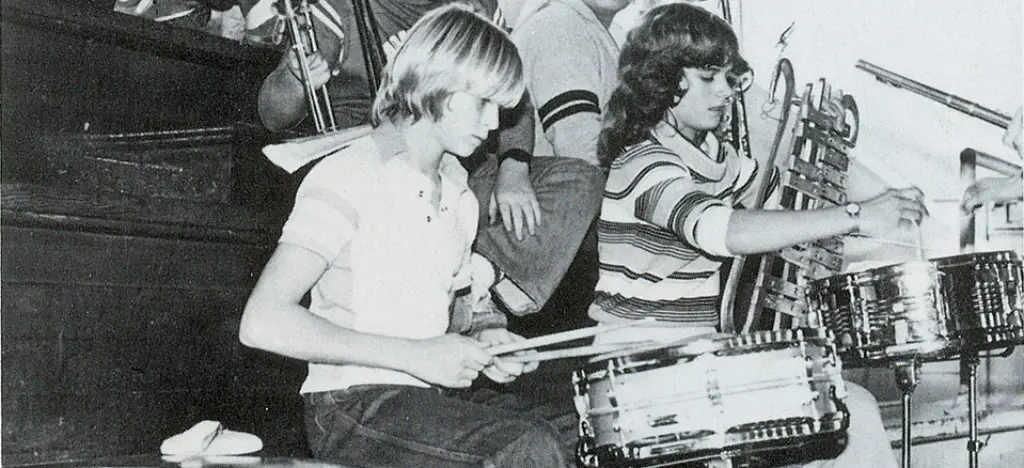 Kurt Cobain grew up without formal guitar lessons and proudly wore that badge.
Kurt Cobain grew up without formal guitar lessons and proudly wore that badge.
Born in 1967 in Aberdeen, Washington, Cobain initially took a brief, one-week guitar class but found that structured learning didn’t suit him ... it made him feel like a musician in a way he didn’t want to be.
His approach was simple and raw. In a rare 1993 interview with German journalist Edgar Klüsener, he said:
“I have no desire to become any better of a guitar player. I have no concept of knowing how to be a musician at all whatsoever. I don’t know the name of chords to play... I couldn’t even pass Guitar 101. I’m not into musicianship at all. I don’t have any respect for it, I just hate it. To learn how to read music, or to understand arpeggios and Dorian modes and all that stuff is just a waste of time. It gets in the way of originality.”
Cobain saw himself as a songwriter, not a guitar virtuoso. He favoured power chords, basic tuning, and a rough-and-ready playing style that served emotion over technique. Grunge, Cobain’s hometown genre, rejected “shredding” solos and polished virtuosity; it celebrated honesty and grit instead.
Even producer Butch Vig noted that Cobain “couldn’t play…and had no interest in trying to learn Eddie Van Halen speed scales or complicated jazz chords” but he had a “primal instinct” that made his riffs feel deeply authentic and memorable.
What you can learn from Kurt Cobain
👉 You don’t have to be a “good” musician to write something that matters. If it feels real to you, it’ll probably feel real to someone else too.
💡 ARTMASTER TIP: If you want to learn raw, honest guitar without overthinking it. Check out Electric Guitar for Beginners with Dre DiMura. No theory, just iconic riffs, power chords, and real songs — taught by a guitarist with over 120 million views on TikTok.
5. Noel Gallagher — Ear over theory
Self-taught songwriter behind 90s anthems
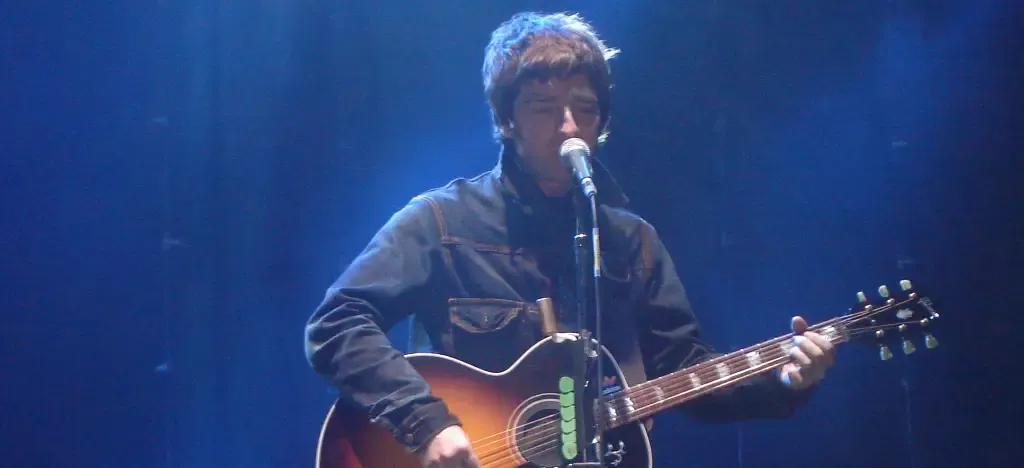 Born in Manchester in 1967, Gallagher began learning guitar during a six-month probation for petty theft at age 13. No one else in his family played an instrument, but something about the guitar pulled him in. He picked up the basics by mimicking songs from the radio and playing along with records. One of the first he mastered was House of the Rising Sun, at first on a single string, then gradually adding chords.
Born in Manchester in 1967, Gallagher began learning guitar during a six-month probation for petty theft at age 13. No one else in his family played an instrument, but something about the guitar pulled him in. He picked up the basics by mimicking songs from the radio and playing along with records. One of the first he mastered was House of the Rising Sun, at first on a single string, then gradually adding chords.
“I’m still learning things on the guitar. Still learning chords by accident… It’s been a life’s worth of fascination for me.”
— Noel Gallagher, via Instagram.
He never took a lesson. He wasn’t interested in scales, charts or technique. What mattered was how the music felt. He once told Pitchfork:
“I still have never taken a music lesson in my life. I just thought it was a nice thing to pass the time away.”
That instinctive approach gave birth to anthems like Live Forever, Don’t Look Back in Anger and Wonderwall. He even wrote Supersonic in one sitting at the studio, playing what sounded good rather than what was ‘correct’.
What you can learn from Noel Gallagher
👉 You don’t need to know what a chord is called to know it sounds good. Let your ear lead, and don’t overthink it.
💡 ARTMASTER TIP: Noel showed that four chords are all you need to write songs that last a lifetime. If you're looking for inspiration or just want to strum along, check out these 100 easy songs you can play with just 4 chords (includes chord charts)
6. Yasmin Williams — Fingerstyle innovator
The experimental guitarist who rewrote the folk rulebook
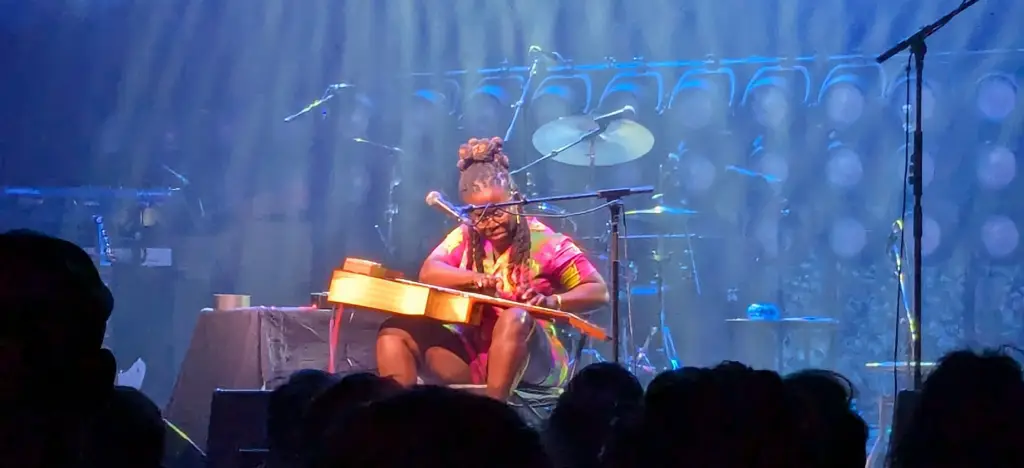 American fingerstyle guitarist Yasmin Williams created a unique approach to guitar - one you never see in lessons, but instantly recognize when you hear it.
American fingerstyle guitarist Yasmin Williams created a unique approach to guitar - one you never see in lessons, but instantly recognize when you hear it.
Born in Northern Virginia in 1997, she discovered music by ear, not through notation or teaching.
She attributes her start to Guitar Hero II, which she played obsessively at age 12:
“At first, I was influenced by the video game Guitar Hero 2 … it just sounded new and cool to me, particularly the hard rock electric guitar riffs” (source)
She bought an electric guitar, played rock tunes from the game and Hendrix, but grew tired of the usual chords. Soon she pivoted to acoustic, experimenting with open tunings, lap-tapping, percussive techniques and giving her strings the freedom to “ring out”.
“The game shaped my experimental approach to guitar … I started lap-tapping the acoustic and that opened up a whole new world.” (The Guardian)
She self-released her debut album Unwind in 2018, studied music at NYU, and dropped Urban Driftwood (2021) and Acadia (2024), gaining acclaim including performances at Newport Folk Festival and NPR Tiny Desk
Williams taught herself kalimba, kora, percussive guitar and polyphonic arrangement - using tap shoes, looper pedals, and kinetic energy to build layered compositions entirely on her own terms.
What you can learn from Yasmin Williams
👉 You don’t have to play like anyone else. If the standard way of doing things doesn’t feel right, invent your own. Your technique is allowed to be as unique as your sound.
💡 ARTMASTER TIP: Yasmin’s playing might feel out of this world, but it’s all rooted in real technique — fingerpicking, tapping, open tunings. If you want to explore those foundations, here’s a breakdown of the essential guitar techniques every player should know.
7. Steve Lacy — iPhone producer
How one artist made his breakthrough using only an iPhone
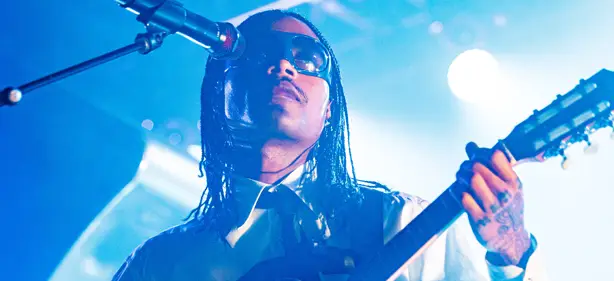 Steve Lacy has done something remarkable in modern music: he learned guitar, songwriting and full music production using only his phone.
Steve Lacy has done something remarkable in modern music: he learned guitar, songwriting and full music production using only his phone.
Born in Compton in 1998, Lacy got hooked on Guitar Hero in his teens and picked up a real guitar soon after. At 18, without any studio or laptop, he began producing tracks entirely on GarageBand for iPhone. He connected his guitar via iRig to his phone and stayed in bedrooms, hallways, even bathroom booths, building beats and layering vocals directly from his pocket.
WIRED described Lacy’s smartphone as his “personal studio since he first started making music.” Meanwhile, the Gadget Lab podcast noted that he created songs, including his contributions to Kendrick Lamar’s DAMN., from start to finish on that same phone.
He once explained his philosophy on creativity versus gear:
“The performance, the song, the feeling matter more than the gear you use to record it.”
— Steve Lacy
That first demo EP Steve Lacy’s Demo (2017) was entirely phone-made and quietly won praise alongside The Internet’s Ego Death Grammy nomination (Wikipedia).
He later produced Kendrick Lamar’s “Pride” and Solange’s tracks, many still starting right from the phone. His solo album Gemini Rights (2022) reached the top 10 on the Billboard 200, and “Bad Habit” became a number one hit. It proved that phone-made music can topple traditional expectations.
What you can learn from Steve Lacy
👉 You already have enough to make something great. Even if it’s just a phone and an idea. Don’t wait for more. Start creating now.
💡 ARTMASTER TIP: If you're writing songs with ideas first and tools second — here are some inspirational techniques real songwriters use to craft hits. Or take a look at our guide on how to become a music producer.
8. Billy Strings — Bluegrass by ear
The bluegrass wunderkind who taught himself by campfire and ear
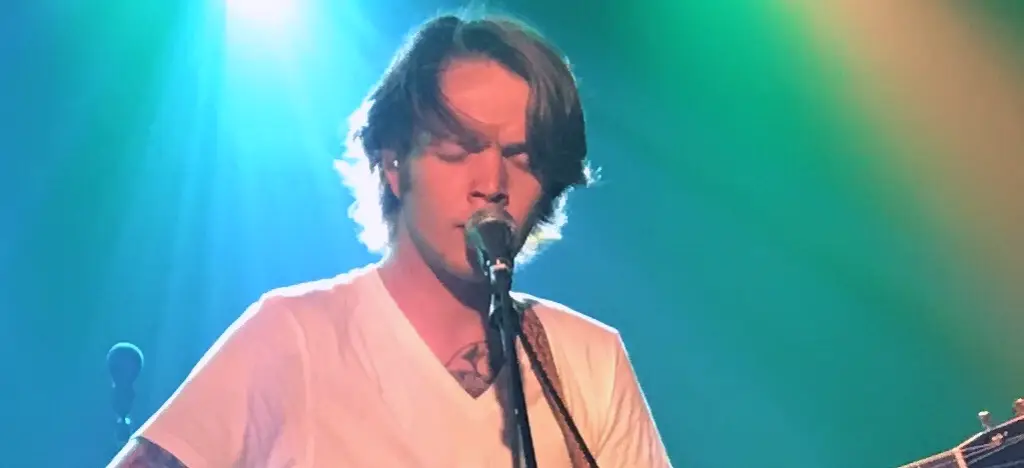 Billy Strings (real name William Apostol, born 1992 in Michigan) is a Grammy-winning bluegrass guitarist and songwriter who learned his craft by instinct, not instruction.
Billy Strings (real name William Apostol, born 1992 in Michigan) is a Grammy-winning bluegrass guitarist and songwriter who learned his craft by instinct, not instruction.
He didn’t read sheet music. He didn’t go to music school. He picked it all up by listening, watching and playing along.
Raised by his stepfather Terry Barber, a bluegrass musician himself, Billy started playing guitar at age four. He learned by ear, copying rhythms and chords from records and jam sessions in their trailer home.
“By the time I was four years old, I had a guitar and he taught me some chords … my ears were trained by ‘How Mountain Gals Can Love’ and ‘Blue Moon of Kentucky’ — that’s the music I cut my teeth on.”
— Billy Strings
As a teen, he expanded his listening far beyond bluegrass. Doc Watson, Black Sabbath, Jimi Hendrix, Nirvana — anything that spoke to him made its way into his playing. He never used tab or theory books. Instead, he absorbed songs by feel, often learning around a campfire or in live jams (BGS)
Even after fame, he was slow to embrace theory. He preferred to keep things natural. It was only after winning a Grammy and touring the world that he began seeking out more technical knowledge, including workshops to improve his fretboard fluency.
His 2024 album Highway Prayers topped the Billboard non-streaming album sales chart, a rare feat for any bluegrass artist. But he still sees himself as a campfire player with good ears.
What you can learn from Billy Strings
👉 You can train your musicality anywhere: at home, by a campfire, jamming with friends. Community and repetition teach just as well as any classroom.
💡 ARTMASTER TIP: If you’re learning by ear and want to build your skills with real songs, these acoustic guitar songs for beginners are a great place to start.
9. Jacob Collier — Harmony master
The harmony wizard who taught himself everything first
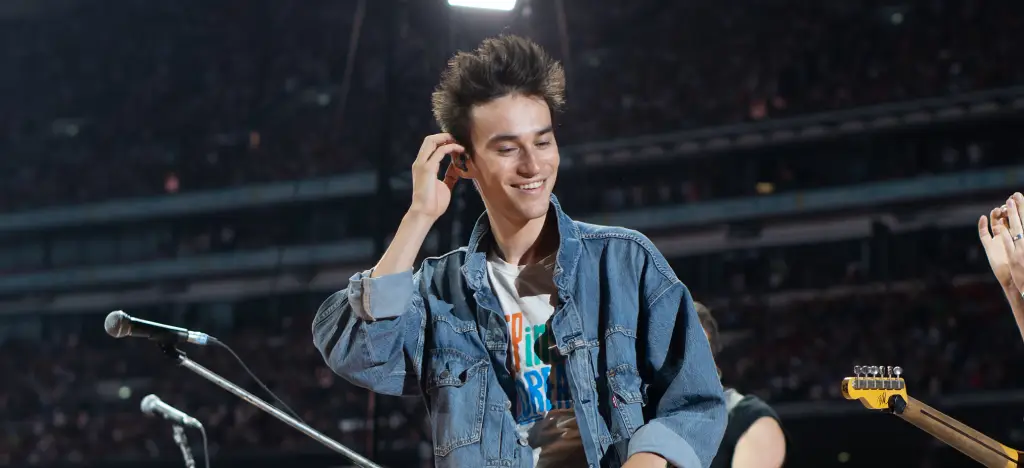 Jacob Collier didn’t learn music the usual way. He taught himself theory, harmony, composition, and production by experimenting and playing everything he could get his hands on.
Jacob Collier didn’t learn music the usual way. He taught himself theory, harmony, composition, and production by experimenting and playing everything he could get his hands on.
Born in London in 1994, he grew up in a musical household. His mother, a violin teacher, gave him a start, but he quickly outgrew formal lessons. By age four, he was exploring piano, bass, drums, guitar and vocals on his own.
He taught himself through listening and trial and error, uploading layered covers to YouTube as a teen. His viral take on Stevie Wonder’s “Don’t You Worry ’Bout A Thing” caught Quincy Jones’s attention. His debut album In My Room (recorded, arranged, and produced entirely at home) won two Grammys.
“I was self-taught until I was about 18 years old. Then I went to music school for a couple of years … But I’m fundamentally a self‑taught musician.”
— Jacob Collier, Music Connection
He often speaks about the limits of traditional teaching:
“Music education is good at teaching technique, but not texture. You only learn about that from listening and experimenting on your own.”
— The Guardian, 2016
With his Djesse albums, Collier created a genre-blending world using just his voice, instruments, tech, and imagination.
What you can learn from Jacob Collier
👉 You don’t need permission to explore. If something confuses or fascinates you, follow it. The weird rabbit holes are often where the best learning happens.
💡 ARTMASTER TIP: If you’re teaching yourself music the modern way, like Jacob Collier, you’ll want to check this out: The new essentials: what every musician should learn in 2025 or discover the tools reshaping the music industry in 2025.
10. Finneas — Bedroom producer
The bedroom producer who changed pop music
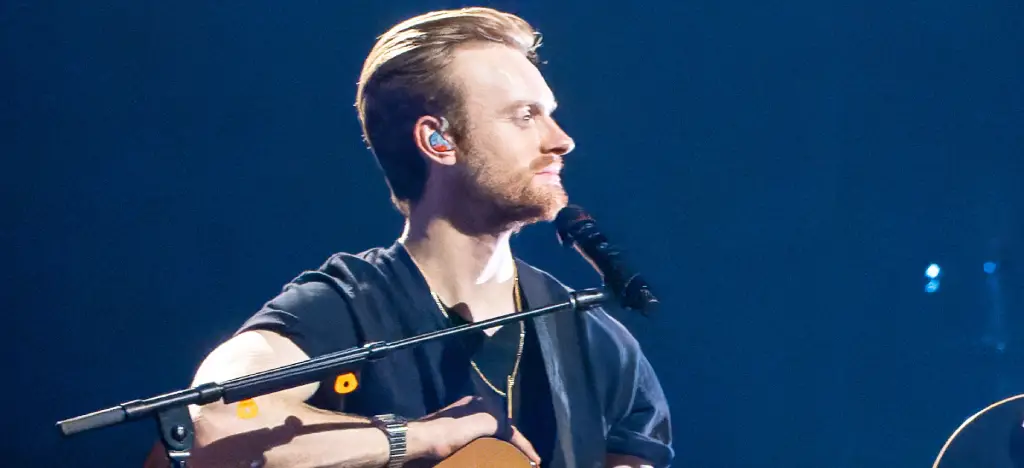 (Photo: Finneas O'Connell, 16 June 2022. © Raph_PH, CC BY 2.0. Cropped)
(Photo: Finneas O'Connell, 16 June 2022. © Raph_PH, CC BY 2.0. Cropped)
Finneas O’Connell didn’t go to music school. He didn’t study production or theory. He taught himself everything from scratch — writing songs, producing tracks, and building a new kind of pop sound in a bedroom.
Born in 1997 in Los Angeles, Finneas grew up in a creative household, but his approach was entirely DIY. He started experimenting with GarageBand at age 12, producing songs using headphones and a second-hand MIDI keyboard. He learned by trial and error, studying songs he loved and figuring out how to recreate their sounds at home.
He started working closely with his sister, Billie Eilish, when she was just 13. Their first hit “Ocean Eyes” was recorded and mixed in his bedroom. Their entire debut album When We All Fall Asleep, Where Do We Go? was made in the same space—and it won Album of the Year at the 2020 Grammys.
“I never learned any of the proper ways to do this … I just started doing it. Everything I know is from messing around, watching videos, and listening.”
— Finneas, Tape Op interview
Finneas’s style has become a blueprint for aspiring self-taught producers. His stripped-back arrangements and intimate vocal production changed how mainstream pop is made.
What you can learn from Finneas O'Connell
👉 You don’t have to sound like anyone else or follow production rules. Just make things that feel honest to you, and don’t be afraid to keep it simple.
💡 ARTMASTER TIP: Finneas built a Grammy-winning sound with just a few essentials in a bedroom. If you’re setting up your own space, this guide on what you actually need to produce music at home covers everything you need to get started.
Why going your own way might be the best way
Researching this article ended up being more inspiring than I expected. And if there’s one thing all these artists prove, it’s this: you don’t need permission to start. You don’t need lessons, grades, or theory books. What you do need is curiosity, instinct, and the guts to figure things out your own way.
Some of the most original sounds in music came from people who didn’t know the “right” way to do it, and that’s exactly why they stood out.
So if you’re teaching yourself, or thinking about it, let this be your permission. Keep going. Make mistakes. Try weird things. Play what you love. Because learning music on your own terms isn’t just possible — it might be the best decision you ever make.
FAQs: Self-learning music
Can you really learn music without formal lessons?
Yes. Many iconic musicians — from Jimi Hendrix to Finneas — were self-taught. What matters more than lessons is consistent practice, curiosity, and finding ways to explore music on your own terms.
What instruments can you teach yourself?
Pretty much all of them. Guitar, piano, bass, drums, voice and even music production can be learned through videos, listening, and experimentation — especially today with online tools.
Is it harder to become a self-taught musician?
It can be more frustrating at times, but it also builds strong instincts, ear training, and a personal style that doesn't rely on copying others.
How do I start teaching myself music?
Pick an instrument, start with songs you love, and use tools like YouTube, beginner courses, or AI teachers to guide you. Don’t worry about theory at first — just get playing.
Are there online courses that help self-taught musicians?
Yes. ArtMaster offers beginner-friendly online music courses taught by professional musicians — including guitar, piano, singing, songwriting and music production.
About the author
Matt Ford is a musician, teacher, writer, and lifelong student of sound.
With years of experience in both performing and teaching, he shares practical advice through ArtMaster to help musicians at every level build skill and confidence in their playing.
